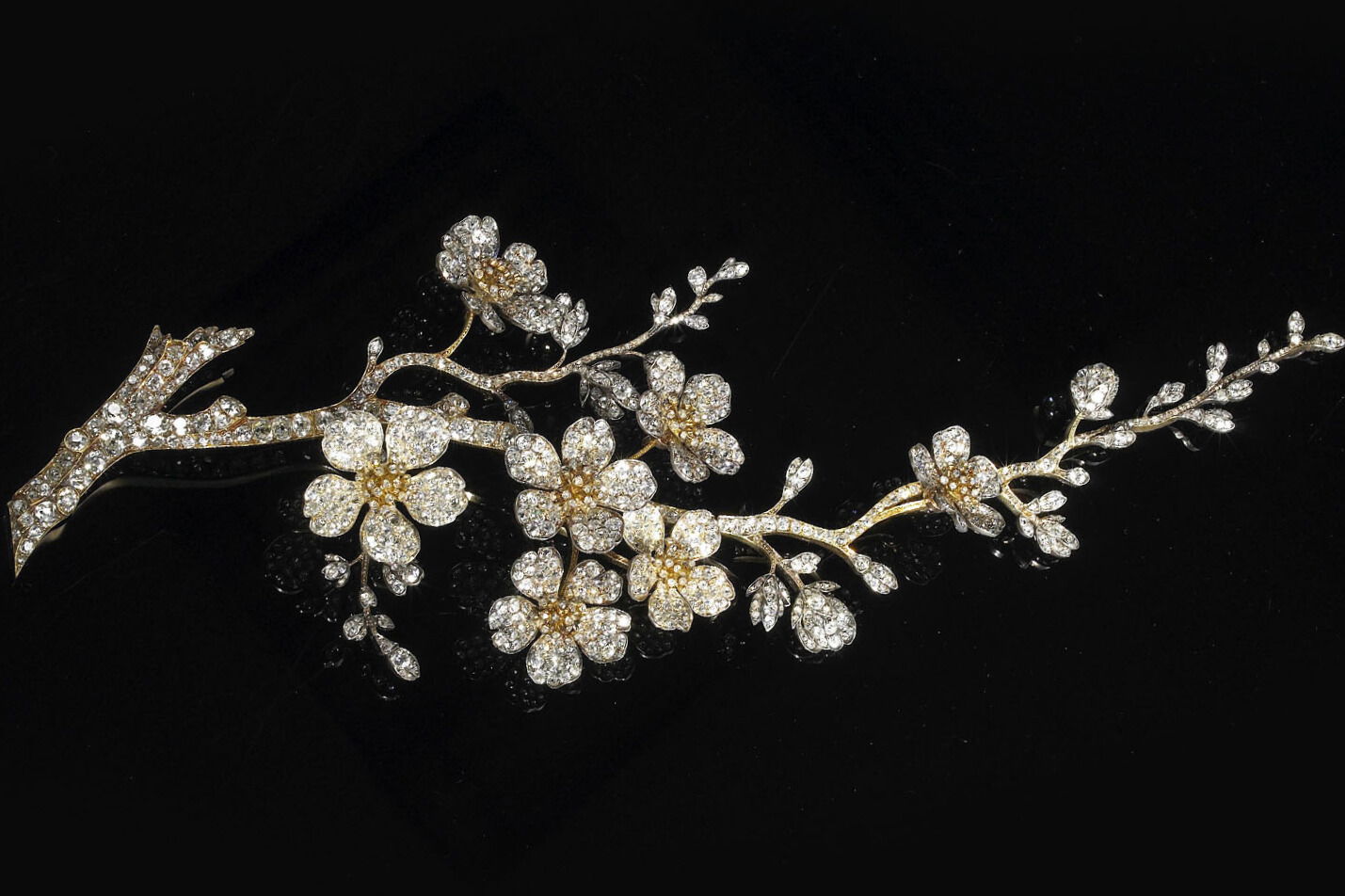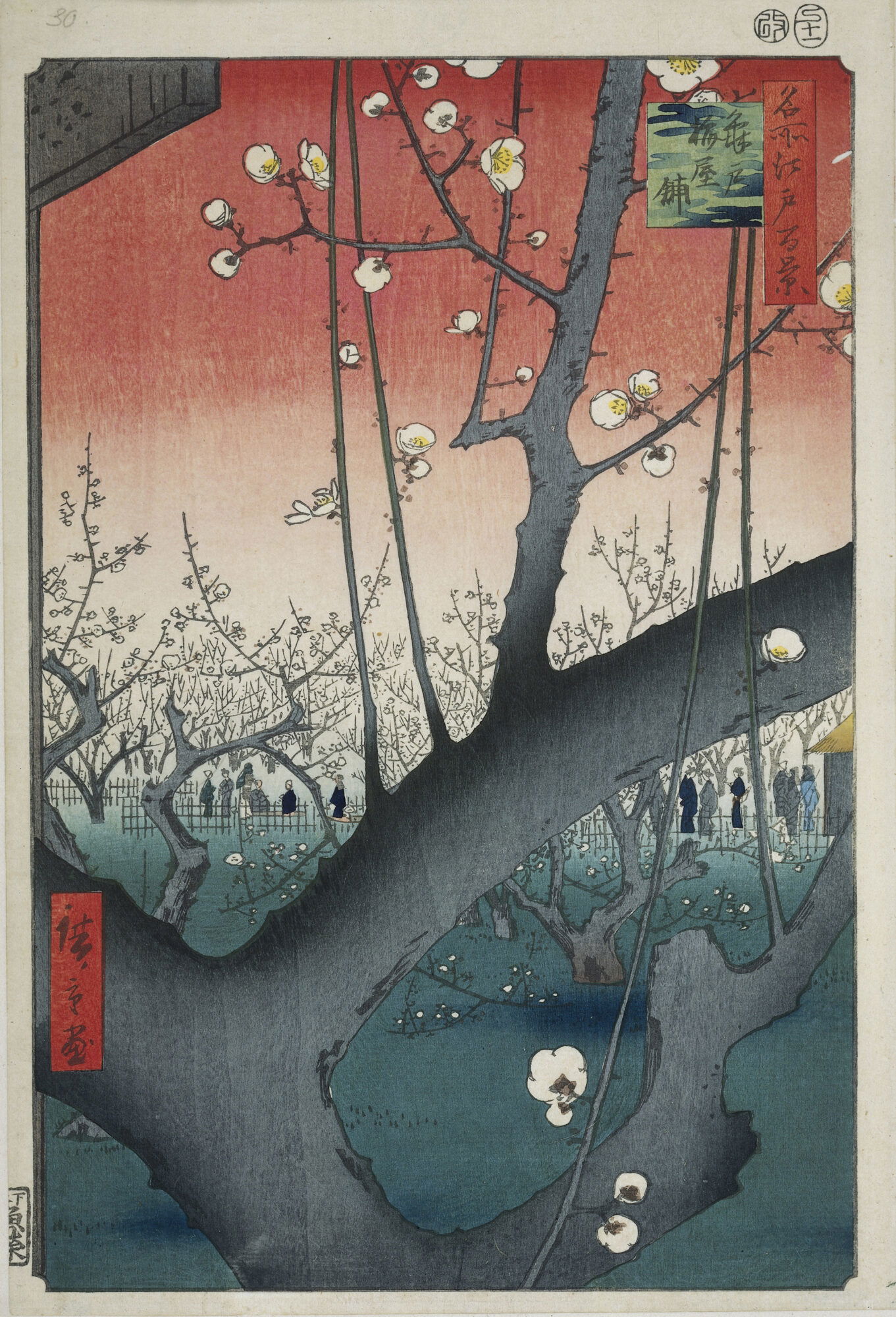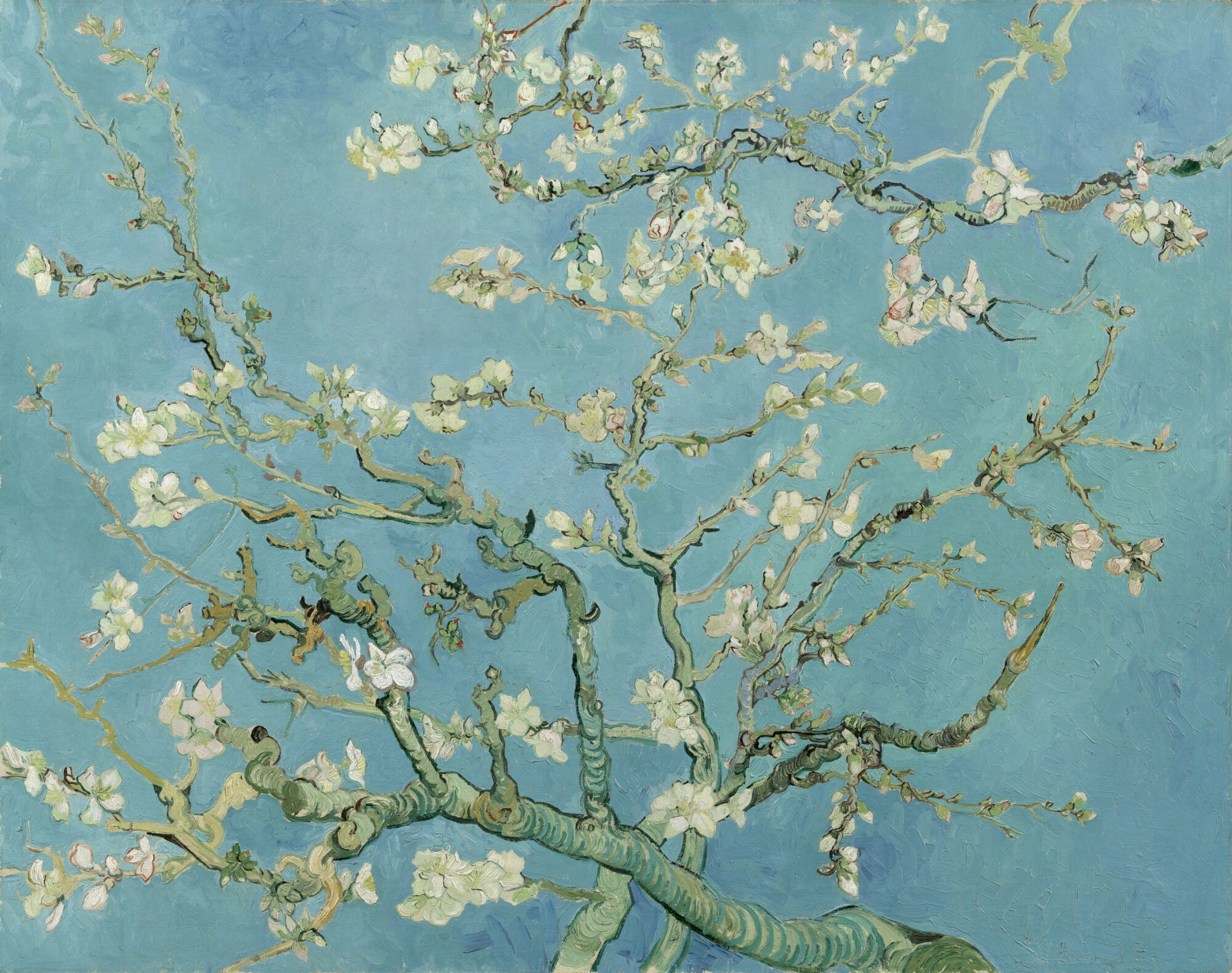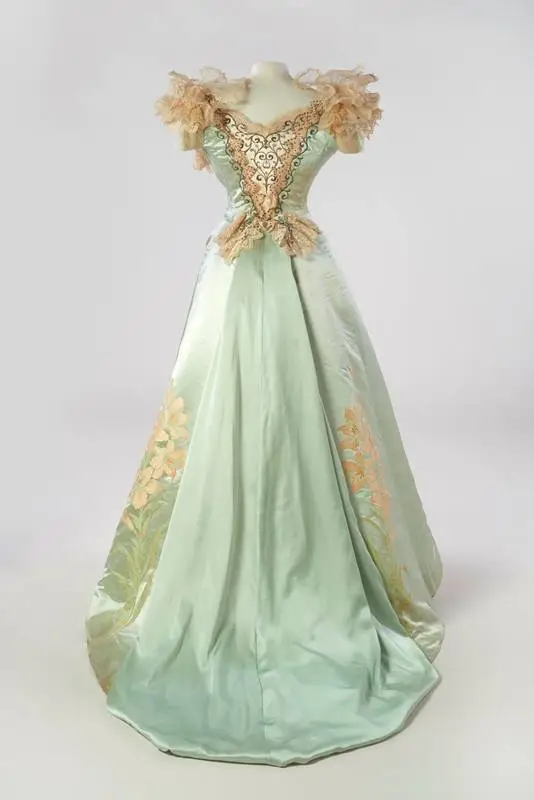Before René Lalique (1860-1945) became famous for his extraordinary creations in the Art Nouveau style, which broke away from 19th century mainstream jewellery, he had been collaborating with the major Parisian jewellery houses of his time including Cartier and Boucheron.
Lalique before Lalique

In this jewel, created in association with Henry Vever (1854-1952), in Paris, probably in the late 1880s, one can already detect elements of Art Nouveau.
The jewel was part of the collection of the Belgian Princess Louis de Cröy and is of extraordinary size. At 29 cm long, the spray would extend from the top of the shoulder down towards the waist and could be separated into three smaller jewels.

The choice of subject itself – a spray of sakura (prunus) – so beloved by the Japanese, closely follows the fashion for all things Japanese that artists such as Whistler, Van Gogh, Monet, Klimt and many others were incorporating into their work at that time. This was a consequence of the arrival in Europe of Japanese prints, artefacts and traditional ornaments, which followed the opening up of Japan after the Meiji restoration in 1868.

This jewel would certainly have created a sensation when it was first worn, perhaps at a Court ball at the end of the 19th century, and possibly pinned on a pastel-coloured gown created by the House of Worth.

